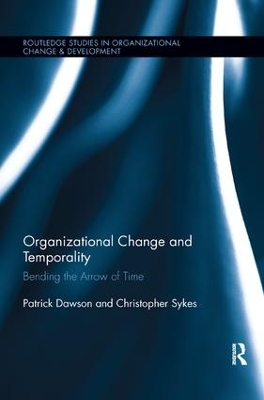Routledge Studies in Organizational Change & Development
2 total works
Organizational Change and Temporality
by Patrick Dawson and Christopher Sykes
Organizational Change and Temporality: Bending the Arrow of Time looks to address the important area of time and temporality, especially as it relates to frameworks and studies for explaining change processes in organizations. It commences with a selective history on the science and philosophy of time before examining the place of time in work and employment, and the presence and absence of theorized time in explanations of organizational change. The intention is to bring to the fore concepts and debates that have largely remained hidden, furthering our knowledge and understanding of time and temporality in changing organizations.
The authors provide a more informed theoretical explanation of the temporal dimensions of organizational change. They examine the concepts and debates behind change theories, philosophical positions and scientific concerns on time and material existence, drawing connections that have previously remained unexplored. This book is key reading for researchers within the organizational change world and will further the academic debate of time and temporality in organizations studies.
This book views change as an ongoing process that should not be solidified or treated as a series of linear events. In drawing on data collected from over 40 years of research, it highlights the theoretical and practical value of using a processual perspective. Illustrative examples from a range of organizations including: Micro-X, General Motors, Pirelli Cables, BHP Billiton, Royal Dutch Shell, British Rail, British Aerospace, Hewlett Packard, Laubman and Pank and the CSIRO make the approach understandable and accessible to both researchers and practitioners.
In a theoretical exploration of temporal context, sociomaterial relations and power-political processes the dynamics of changing organizations is brought to the fore and the implication for reshaping change examined. On the practice of engaging in longitudinal research, study design, data collection and processual analysis, as well as the write-up and dissemination of findings, are all considered. This is an innovative and highly practical research monograph that captures the truly complex processes of changing organizations and illustrates how these are best understood from a processual perspective.

